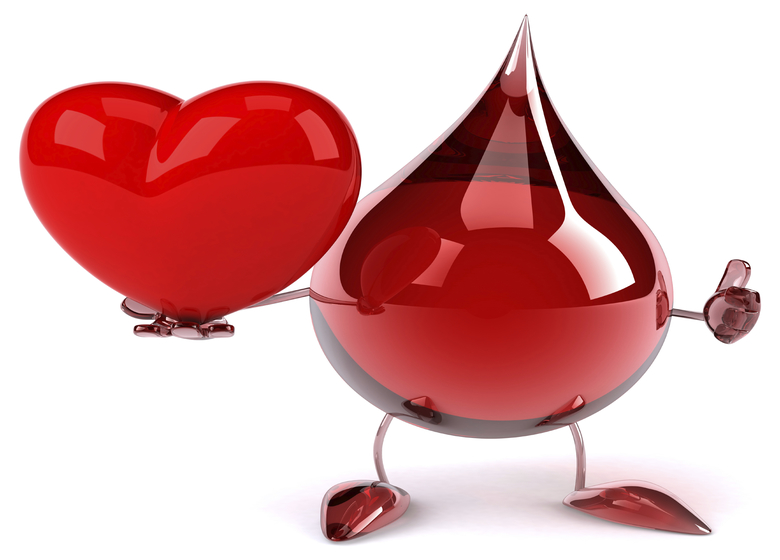Every child is curious. They ask several questions and some of them may even amaze you at times. But it is up to you to provide them with the right kind of information. This is their age to grow and develop into a smarter and more aware human being. We have collected some amazing facts related to the human heart and the blood that runs in the entire human body. This will help you to grow interest in your child about the human body and functions of different body parts. This may even make them an outstanding student in their classroom!
You must already know that the heart is literally the key holding the entire human body. One cannot function without the proper functioning of the heart. Similarly, blood is that aspect of the body which runs the body day and night. The flow of blood keeps the flow of the human body. Let your child dive deeper and know more about the human heart and the blood that keeps one alive and running. Not to mention, these facts are going to make your little one brighter.
Human Heart Facts
- The heart is one of the most important organs in the human body, continuously pumping blood around our body through blood vessels.
- Your heart is located in your chest and is well protected by your rib cage.
- The study of the human heart and its various disorders is known as cardiology.
- The heart is made up of four chambers, the left atrium, right atrium, left ventricle and right ventricle.
- There are four valves in the human heart, they ensure that blood only goes one way, either in or out.
- Blood that leaves the heart is carried through arteries. The main artery leaving the left ventricle is the aorta while the main artery leaving the right ventricle is the pulmonary artery.
-
Blood going towards the heart is carried through veins. Blood coming from the lungs to the left atrium is carried through the pulmonary veins while blood coming from the body to the right atrium is carried through the superior vena cava and inferior vena cava.
- You might have felt your own heart beating, this is known as the cardiac cycle. When your heart contracts it makes the chambers smaller and pushes blood into the blood vessels. After your heart relaxes again the chambers get bigger and are filled with blood coming back into the heart.
- Electricity going through your heart makes the muscle cells contract.
- You might have watched television shows or movies where a patient in a hospital is attached to an electrocardiogram (ECG). You might recognize it as the machine with a line moving across a screen that occasionally spikes (or remains flat when a patient is dying). This machine can measure the electricity going through a patient’s heart. A doctor can use the information to know when a patient is having heart rhythm problems or even a heart attack.
- Heart attacks cause scar tissue to form amongst normal heart tissue, this can lead to further heart problems or even heart failure.
Blood Facts
- Do you know? – Blood makes up around 7% of the weight of a human body.
- Blood contains red blood cells, white blood cells, and platelets.
- These blood cells float in a yellow liquid called blood plasma. Blood plasma is made up of 90% water and also contains various nutrients, electrolytes, gases, proteins, glucose, and hormones.
- Blood plasma can be separated from the cells by spinning the blood in a device known as a centrifuge until the cells collect at the bottom of the tube.
- Red blood cells have the important job of carrying oxygen around the body. They also contain a protein called hemoglobin. Hemoglobin contains iron which combines with oxygen to give hemoglobin and our blood, a red color.
- Red blood cells develop in the bone marrow and circulate in the body for around 120 days.
- White blood cells are an important part of the body’s immune system. They defend against certain bacteria, viruses, cancer cells, infectious diseases and other unwanted materials.
-
Platelets help blood clot in order to limit bleeding when your skin is cut. Blood clots can occasionally have negative effects, if they form in blood vessels going to the brain they can cause a stroke while clotting in a blood vessel going to the heart can lead to a heart attack.
- As well as delivering important substances to our cells, blood also helps take away unwanted waste products.
- Grouping human blood types can be a difficult process and there are currently around 30 recognized blood types (or blood groups). You might be familiar with the more simplified “ABO” system which categorizes blood types under O, A, B and AB. Do you know which blood type you are?
- Many generous humans around the world give blood donations every year. This blood is used in important blood transfusions or made into medication.
- There are strict rules that limit the number of people who can volunteer blood donations. These include screening processes that test for diseases that could be transmitted by a blood transfusion as well as ensuring recovery time for the donor’s body to replace its own blood.
These facts will clear a lot of doubts that your child had. Even if they didn’t, it is the kind of information that is necessary for the growth and development of every student. Share these with your child and learn together.
Also read – Facts about Human brain and senses













